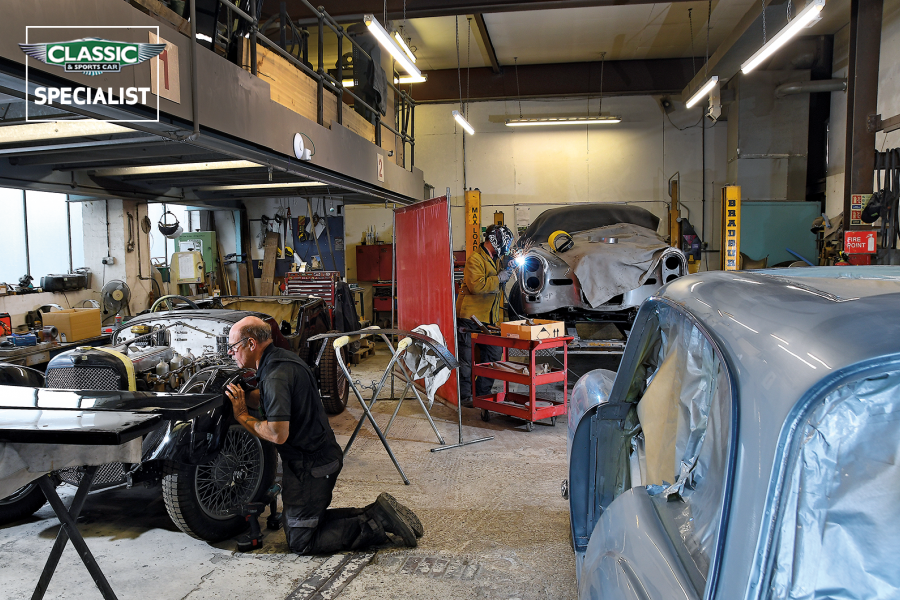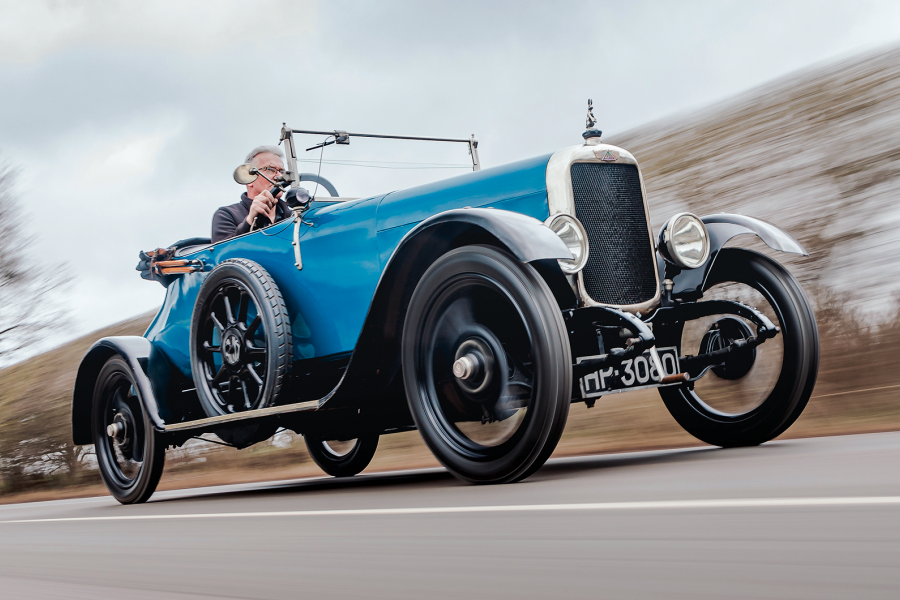Chassis 27246 is one of only three Cabriolets that Graber built on the TE21 platform, and was uniquely specified as a square-wheelarch model, lowered by 2cm and fitted with Borrani wires, a Nardi steering wheel and Koni dampers.
After being shown at Geneva in ’65, it was delivered to a Mr Oishei, from the family that owned the Trico windscreen-wiper company.
That reduction in ride height means that the Graber car appears far more sleek than the standard TE21s.
Gone is the upright grille in favour of a horizontal opening and the headlamps are paired beneath lenses rather than being stacked individually.
The small amount of detailing that has been applied to the clean lines is delicate and tasteful, with an Aston-esque bonnet scoop and exquisite side vents.
The interior has been updated, too. The dials are positioned ahead of the driver, while the use of wood has been toned down and complemented by leather trim and painted metal.
The Alvis TE21 Graber Super Cabriolet’s lower ride signals its sporting intent
There is less room for rear-seat passengers, but dropping the hood transforms its lines, emphasising its continental chic next to the British dependability of the factory cars.
Were you to replace the famed Alvis red triangle with a Maserati trident, no one would raise an eyebrow.
It even seems to drive differently. Granted, Hull’s original, unrestored car has covered only 18,000 miles from new, so it is reasonable to assume that it will be taut and well sorted.
Yet it also feels more sporting and carries an air of being an Alvis for film stars rather than war heroes.
Or, as Graber said in his catalogues, ‘not a dream car’ but a ‘stupefying reality’!
Towards the end of TE21 production, Alvis merged with Rover.
The Alvis TE21 got a Nardi steering wheel as part of its coachbuilt makeover
It seemed a natural enough alliance, and for a brief period there was exciting talk of a V8-powered, mid-engined car; Alvis even built a prototype that was later tested by Autocar.
In 1967, the two marques were swept up by the Leyland Motor Corporation, becoming part of British Leyland the following year.
There was no room for a traditional coachbuilt model made in relatively low numbers, so the TF21 was the final Alvis car to leave Holyhead Road.
Perhaps that was just as well – there were rumours that the proud name was to appear as a badge on another marque’s cars, which would have been a sad way for it to continue.
As it was, the abandonment of the TE350 and adoption of Graber’s design proved to be a pivotal point.
Graber lamps behind the Alvis lenses
It meant that the TD, TE and TF models formed a glorious encore for the Three Litre rather than a genuinely new start.
“We had a free hand in engineering the TE and TF21,” concludes Dunn, “and believed in what we had done.
“The success of those cars was due to inheriting a sound basic design, together with a style that came from the master – Hermann Graber.”
If Alvis had only known that the TF21 would be the final act in its motoring history, how exciting it would have been to give the car a body based on the ’65 Graber Super and really go out with a bang.
Images: Gerard Hughes
Thanks to: Alvis Owner Club; Rob Rowe; Stansted Park
This was first in our January 2014 magazine; all information was correct at the date of original publication
Factfile
Alvis TE21
- Sold/number built 1963-’66/352
- Construction steel chassis, steel body panels
- Engine all-iron, overhead-valve 2993cc straight-six, twin SU carburettors
- Max power 130bhp @ 5000rpm
- Max torque 172lb ft @ 3250rpm
- Transmission five-speed manual, RWD
- Suspension: front independent, by wishbones, coil springs, anti-roll bar rear live axle, semi-elliptic leaf springs; telescopic dampers f/r
- Steering worm and nut, optional power assistance
- Brakes discs, with servo
- Length 15ft 9in (4800mm)
- Width 5ft 6in (1675mm)
- Height 5ft (1525mm, saloon)
- Wheelbase 9ft 3½in (2830mm)
- Weight 3248lb (1476kg)
- 0-60mph 12.7 secs
- Top speed 108mph Mpg 16
- Price new £2774
Enjoy more of the world’s best classic car content every month when you subscribe to C&SC – get our latest deals here
READ MORE
Buyer’s guide: Alvis TD-TF
Wolseley 1500 vs Singer Gazelle: middleweights for middle England
Austin Sheerline vs Vanden Plas Princess: the Longbridge Daimlers
James Page
James Page is a regular contributor to – and former Editor of – Classic & Sports Car






















